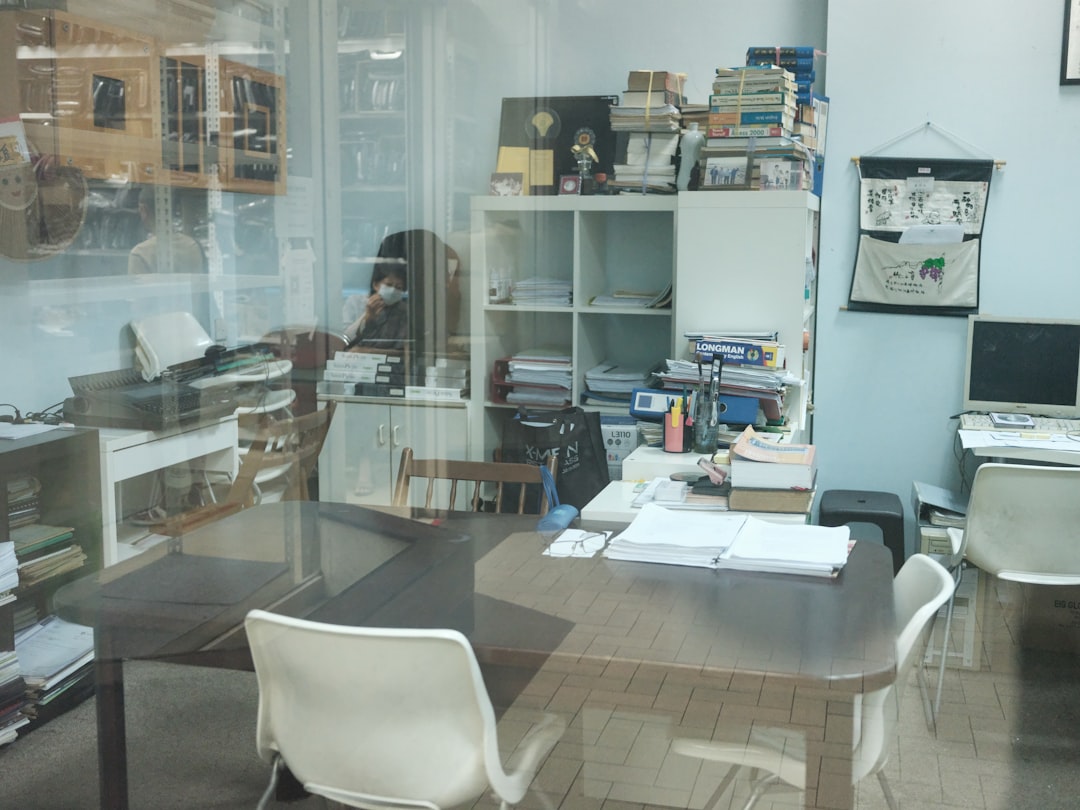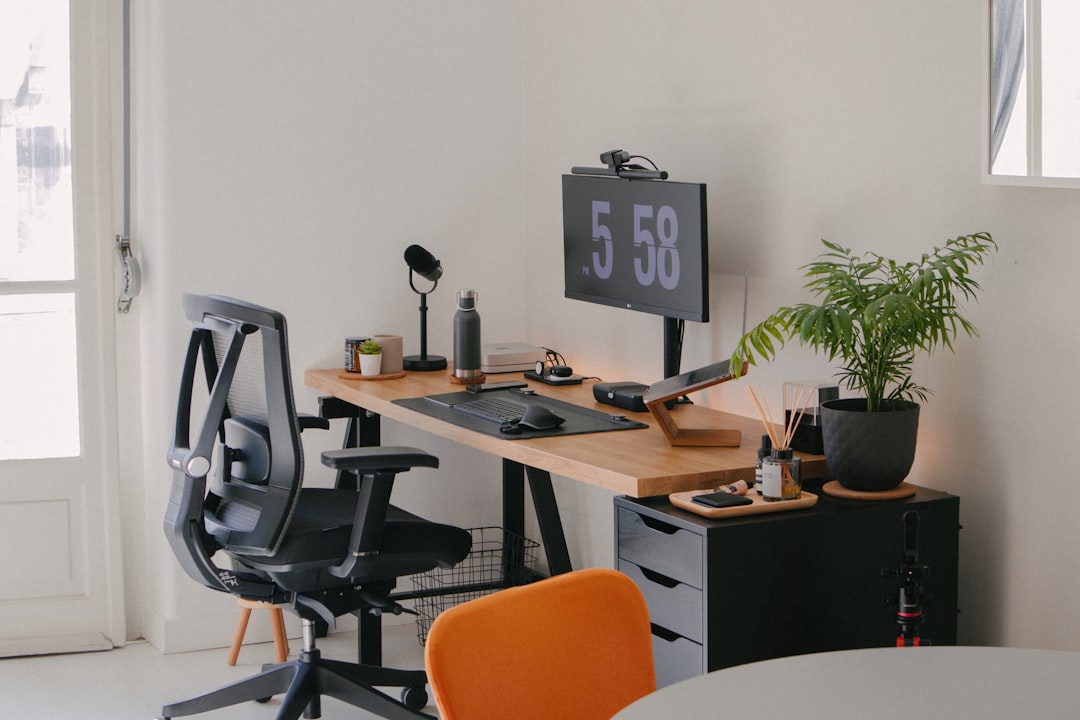

Engage prospects with a scan and streamline customer engagement with FREE QR code marketing tools by Sona – no strings attached!
Create a Free QR CodeFree consultation

No commitment

Engage prospects with a scan and streamline customer engagement with FREE QR code marketing tools by Sona – no strings attached!
Create a Free QR CodeFree consultation

No commitment
Today’s digitally driven workplace is changing the way office furniture repair and maintenance are managed, as businesses seek innovative solutions to extend asset life and reduce costs. Office furniture repair services face challenges such as missed high-value service requests, lack of visibility into urgent asset needs, and inefficient scheduling that frustrates clients and service teams. These problems often arise from outdated workflows like manual maintenance logs and paper forms, which cause slow responses and lost opportunities for actionable data.
QR codes are transforming this scenario by creating a seamless link between physical assets and digital service experiences. Strategically placed on key furniture or service documents, QR codes empower repair professionals to capture immediate service requests, reduce errors, and provide users, facility managers, or technicians with instant access to maintenance guides, booking portals, repair forms, or warranty details. For structured intake, see Google Forms QR codes.
This approach streamlines repair workflows, boosts customer responsiveness, and surfaces valuable data on user needs and engagement. It helps prevent neglected repairs from becoming costly replacements, supports sustainability goals, and opens doors for proactive upsell or cross-sell opportunities. Discover how integrating QR codes can solve persistent challenges for office furniture repair teams, connecting operations and driving measurable business improvements.

In office furniture repair, missed or delayed intake of valuable requests leads to longer asset downtime and dissatisfied clients. QR code technology turns every furniture asset into a digital touchpoint that anyone can use to trigger action. When a chair wobbles or a desk lock jams, an employee can scan a code and submit a pre-filled request that routes to the right technician. The result is faster triage, fewer emails, and fewer calls bouncing between departments.
Start by replacing analog processes that cause friction. Printed manuals quickly become outdated; handwritten maintenance logs are hard to read and rarely centralized; phone-based intake creates bottlenecks. Use QR-linked guides, digital forms, and automated routing to eliminate delays and cut errors. Modern QR platforms like Sona QR let you update destinations in real time, so your codes never go stale.
Modern QR platforms automate these tasks, reducing latency and ensuring providers respond first when speed is critical. Teams that adopt QR-first workflows typically see faster response times, higher client satisfaction scores, and fewer escalations tied to misrouted or lost requests.

Traditional methods make it difficult to track which assets generate anonymous or untracked repair opportunities, resulting in lost revenue and unclear demand patterns. QR codes bridge this gap by connecting a physical pain point to a digital action that is measurable and simple, as shown in this overview of home repair QR. The adoption curve is gentle because users already know how to scan codes with their smartphone camera, eliminating the need to download an app.
In a service business where speed, accuracy, and proof of value matter, QR codes deliver advantages across the entire workflow. From a quick scan on an appointment card to a code on a chair’s underside, your team captures intent at the moment of need. In turn, you gain analytics that inform staffing, inventory, and upsell strategies.
These benefits are especially relevant to materials common in this industry. For example, adding codes to work order receipts encourages review submissions, while codes on maintenance flyers in break rooms let employees submit minor fixes before they become big problems. Codes on installation paperwork drive warranty registrations that capture account-level data for future campaigns.
QR codes support several formats that align with the most common tasks in office furniture repair. Choosing the right format ensures that the scanner’s next step is obvious and effortless. For many teams, a mix of web link and form-based codes covers the majority of needs, with occasional use of vCards or Wi-Fi access for technicians on-site.
Dynamic QR codes are ideal for this vertical because they reduce reprint waste and make it easy to swap destinations as policies, team members, or portals change. For fixed assets like a universal warranty registration page, static codes can work, but you forgo analytics and flexibility.
With Sona QR, you can generate any of these formats, manage them centrally, and track performance across placements, clients, and campaigns. As your processes evolve, dynamic codes let you keep pace without costly reprints.

Growth in office furniture repair services often hides in plain sight. By placing QR codes where problems are noticed, you capture requests earlier, reduce asset downtime, and create more touchpoints for revenue-generating interactions. The more precisely you deploy, the more instructive your analytics become, revealing which accounts, departments, or locations drive demand.
Think beyond the obvious. Under-chair tags, laminated desk cards, and warehouse rack labels are high-yield placements. Service vans, uniforms, and invoice footers extend your capture net outside the office and into the moments when decision makers are budgeting or evaluating vendors.
Every deployment increases the precision of your targeting, helps you forecast staffing, and opens insights into account activity. Over time, you build a feedback loop that improves customer experience while identifying upsell opportunities like ergonomic consultations or preventive maintenance contracts.

QR-driven workflows reduce missed feedback, lagged appointment follow-up, and low engagement. The most effective deployments align with core customer interactions, from reporting an issue to reviewing a completed repair. Use the following use cases to anchor your strategy and measure impact.
In practice, these use cases help teams move from reactive to proactive. A single QR-enabled intake process can cut the back-and-forth of emails in half, while QR-linked maintenance histories reduce site time by giving technicians the context they need before they arrive.
By capturing interactions at each step, providers create a feedback-rich environment for ongoing improvement. You can quantify lift in conversion rate from scan to scheduled job, track which assets are most problematic, and determine when to recommend replacement versus repair.
Each QR code scan is a high-signal data point. It tells you who engaged, what they needed, where they scanned, and when they acted. By deploying multiple codes across touchpoints, you automatically segment your audience and can retarget with precision. This turns simple scans into pipelines of qualified demand.
In office furniture repair, segmentation often maps to department, asset type, and urgency. A scan from HR about a reception desk scratch is different from a scan from Facilities about a broken caster set on a safety-sensitive chair. Treat them differently in your follow-ups and your conversion rates will improve.
With Sona QR, each QR code becomes a smart entry point to your funnel. You can tag, score, and route leads based on real behavior rather than assumptions, then measure which segments convert and which need education or incentives.
QR codes connect your offline footprint to measurable digital journeys. For office furniture repair services, that means every brochure, receipt, van decal, and service sticker can drive people to action while feeding analytics to your marketing stack. The result is a more cohesive experience and a clearer line of sight from touchpoint to revenue.
Use QR codes to unify campaigns across physical and digital channels. When a prospect scans a direct mailer for a discount on chair restoration, your team sees the response, follows up with a targeted email, and attributes the eventual booking back to the original scan. This level of visibility was once difficult with print alone. For enterprise deployments and strategy examples, see QR code HQ.
QR codes serve as the offline onramp to your digital marketing engine. With a centralized platform like Sona QR, you manage all codes, monitor performance, and sync scan activity with your CRM and ad platforms to close the loop between exposure, engagement, and booked work.
Launching a QR campaign is straightforward when you break it into focused steps. The goal is to align each code with a clear business outcome, validate the creative and placement, and then instrument the analytics that prove impact.
Use the following checklist to plan, deploy, and optimize. Adapt examples to your service mix, client profile, and go-to-market strategy. For most office furniture repair teams, starting with intake and feedback use cases generates the fastest results.
As your program matures, expand use cases and experiment with creative placements, such as QR codes on technician badges for quick contact, or on packing slips for parts reorders. Keep a regular cadence for performance reviews so lessons translate into action.

QR code analytics power proactive service. When you understand who scans, where they scan, and what they do next, you can optimize routes, staffing, and promotions with confidence. Analytics also make performance visible to clients, who increasingly expect their vendors to back claims with data.
Do not stop at scan counts. Tie scans to downstream actions such as form submissions, scheduled appointments, and invoices paid. This full-funnel view shows which placements produce real business value. It also helps you calculate ROI per code and per channel so you can invest wisely.
Aim for practical benchmarks. For example, many teams target a scan-to-form completion rate of 40 to 60 percent for simple intake forms, and a scan-to-booked appointment rate of 15 to 30 percent depending on urgency and incentive. Use your baseline to identify where content or placement improvements can have the biggest payoff.
Once your foundation is in place, small changes can yield big improvements. Focus on clarity, context, and follow-through. Clear calls to action increase scan likelihood; context-appropriate placements improve relevance; automated follow-ups ensure no interest goes to waste.
Choose the practices that best fit your clients and media mix. Office furniture repair work is practical by nature, so your QR strategy should be practical too: fast to scan, fast to act, and measurable from start to finish.
Platform integration keeps improvements ongoing and insight-driven. Sona QR connects scans to your CRM so your team can prioritize hot leads, score engagement, and automate next steps without manual work.
QR codes transform every office furniture asset and service document into a digital access point, removing analog barriers and surfacing previously untracked demand. This shift speeds repairs, keeps stakeholders engaged, and enhances asset value by making maintenance measurable and actionable. It also aligns with sustainability goals by encouraging repair over replacement through timely reporting, educational content, and transparent cost comparisons.
By moving from fragmented, manual intake to dynamic QR-enabled workflows, office furniture repair services capture more prospects, reduce missed opportunities, and generate actionable insights. Connecting every scan to workflows and analytics accelerates response times, boosts client satisfaction, and drives growth while supporting a repair-first workplace culture. With Sona QR, you can generate trackable codes, manage campaigns centrally, and link engagement to revenue through Sona.com’s attribution capabilities. Start creating QR codes for free.
QR codes have revolutionized office furniture repair services by transforming traditional maintenance processes into seamless, data-driven interactions. Whether it’s enabling instant access to repair histories, scheduling services effortlessly, or providing technicians with up-to-date equipment details, QR codes eliminate guesswork and enhance every customer touchpoint. Imagine clients effortlessly scanning a code to request service or track repair status in real time, boosting satisfaction and loyalty.
With Sona QR, you can create dynamic, trackable QR codes that update instantly—no reprinting needed—and connect every scan to actionable insights. This means better resource allocation, faster response times, and clear visibility into service performance, making your repair services more efficient and profitable. Start for free with Sona QR today and turn every scan into a smarter service experience and a stronger customer relationship.
Look for services that use modern digital tools like QR codes to streamline repair requests, ensure faster response times, and provide clear maintenance histories, which improves reliability and client satisfaction.
Common office furniture needing repair includes chairs, desks, locking mechanisms, and other frequently used assets that can experience issues like wobbling, jammed locks, or surface damage.
Repair costs vary, but using QR code systems with warranty lookups and cost calculators can help clients compare repair versus replacement costs for more sustainable and informed decisions.
Signs include wobbling chairs, jammed desk locks, damaged surfaces, or any malfunction that affects usability and safety, which can be quickly reported via QR code-enabled forms.
Prevent frequent repairs by using QR code–linked preventive maintenance scheduling, following safety and compliance guides accessible via QR codes, and educating staff on proper furniture use and care.
Use Sona QR's trackable codes to improve customer acquisition and engagement today.
Create Your FREE Trackable QR Code in SecondsJoin results-focused teams combining Sona Platform automation with advanced Google Ads strategies to scale lead generation

Connect your existing CRM

Free Account Enrichment

No setup fees
No commitment required

Free consultation

Get a custom Google Ads roadmap for your business






Launch campaigns that generate qualified leads in 30 days or less.
